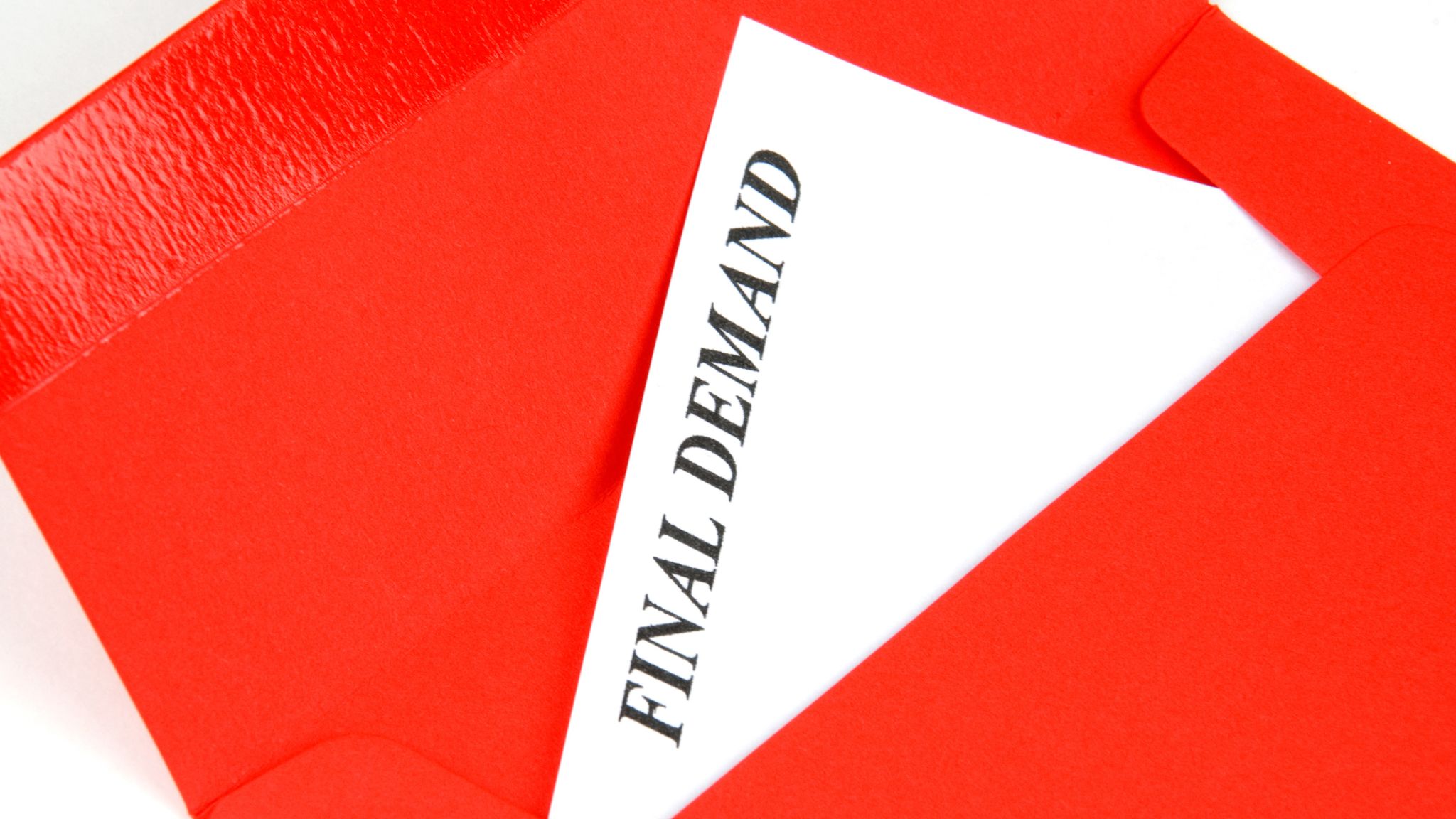
Lawsuits certainly have their place in resolving civil disputes, but they can be time-consuming and expensive. On top of those factors, you’re not even guaranteed a favorable outcome in court.
Thompson Law would never dissuade you or any other client from using a lawsuit to get justice in a personal injury case, but it may be wise to first send the at-fault party a demand letter. Demand letters, informal though they are, may achieve your objectives in a timely and efficient manner. We’ll take a look at the utility of demand letters in California civil matters and offer some advice for making yours effective.

In the context of a personal injury case (or other California civil matter), a demand letter serves as an official (but informal) notice that someone believes another person or entity has wronged them. Demand letters include details of the alleged wrongdoing, evidence of the injuries suffered, and, most importantly, the relief being sought by the plaintiff.
In more situations, demand letters are not legally binding—recipients are under no statutory requirement to comply with the letter’s demands or even send a response. These letters can, however, indicate to potential defendants that the plaintiff is serious about seeking damages and that a lawsuit may be imminent if demands aren’t met.
The senders of demand letters often seek monetary relief, but not always. Sometimes, they simply want the recipient to stop doing or start doing something, such as adhering to a written contract.
Demand letters may be involved in many types of civil cases, including personal injury, contract breach, property damage, infringement of intellectual property, landlord-tenant disputes, and others. Personal injury cases often involve car wrecks, slip-and-fall accidents, dog bites, medical malpractice, and workplace accidents.
A letter of intent to sue is a formal notification that a potential plaintiff sends to a prospective defendant. As its name implies, the letter indicates the plaintiff’s intention to file a lawsuit.
Letters of intent to sue are typically used in civil cases, including personal injury or liability-related claims.
Unlike traditional demand letters, a letter of intent to sue clearly states that the sender intends to file a lawsuit if the issue in question isn’t resolved. It’s a precursor to actual litigation that’s meant to express the seriousness of the claim.
A final demand letter before legal action is a last attempt at resolving a dispute prior to litigation. This type of letter formally outlines grievances, legal grounds, and remedies sought by the plaintiff. It also provides a deadline for recipients to comply with, notifying them that legal action will follow if they don’t resolve the issues mentioned.
California law does not lay out any specific, uniform requirements for demand letters. Specialized requirements may apply based on the type of case you have, though.
For example, Californians wishing to file a claim against a business for deceptive practices or some other infraction outlined in the state’s Consumer Legal Remedies Act (CLRA) must send a demand letter at least 30 days before filing a lawsuit.
Additionally, consumers must send a demand for retraction if they feel they have been libeled or slandered. That type of demand letter has to go out within 20 days of the knowledge of defamation.
State law sets forth a few other requirements for special types of personal injury cases. While demand letters have no universal statutory requirements, successful ones have a few things in common.
One of the most important components of a California demand letter is the accurate identification of involved parties.
Your recipient should know who the letter is coming from, and you should triple-check to make sure you’re sending the letter to the right entity. For instance, make sure you know whether you intend to send a letter to a person or business.
Making accusations without clear evidence to support them is one of the surest ways for a demand letter to backfire.
You should clearly yet concisely lay out the facts of the alleged wrongdoing, including the specific ways it has caused injury. Supporting evidence may include medical bills, pictures of physical injuries, or police records.
Using scorched-earth language in your demand letter may feel cathartic in the moment, but it helps nobody in the long run. The more threatened your recipient feels, the less amenable they will be to your demands. Remember: demand letters are about resolution, not confrontation.
Almost any adult with mental capacity who believes they have a valid claim can send a demand letter in California. Family members of decedents can send demand letters in suspected wrongful death cases. Legal guardians can send demand letters on behalf of minors or incapacitated adults.
Attorneys also have the authority to send demand letters, and we strongly feel that’s the best route for any claim. Experienced attorneys understand specialized legal requirements that may apply in certain cases. Broadly speaking, attorneys can ensure demand letters contain the essential components and strike the right tone.

Below are some key granular components every demand letter should include.
Your demand letter should soberly lay out the underlying facts related to your claim.
For instance, it’s important to provide every relevant detail of a car accident that caused injuries. That includes:
A crucial part of any demand letter is the explanation of damages. In this context, damages refer to the specific losses caused by the alleged wrongdoing.
Generally, personal injuries can cause three types of damages:
The centerpiece of every demand letter is the, well, demand. What do you want the recipient to do (or not do)? Politely but firmly state what you feel you are owed—money, retraction of public claims, adherence to a contract, or whatever relief you seek.
To avoid confusion or ambiguity, identify a reasonable window of time in which you expect the letter’s recipient to comply with your demands. Thirty days is a commonly accepted deadline. Keep in mind, though, that some types of cases allow recipients a specific amount of time to respond.
A letter of intent to sue is a formal notification that a potential plaintiff sends to a prospective defendant. As its name implies, the letter indicates the plaintiff’s intention to file a lawsuit.
Letters of intent to sue are typically used in civil cases, including personal injury or liability-related claims.
Unlike traditional demand letters, a letter of intent to sue clearly states that the sender intends to file a lawsuit if the issue in question isn’t resolved. It’s a precursor to actual litigation that’s meant to express the seriousness of the claim. Both types of letters can express a plaintiff’s intent to sue if the defendant does not meet the plaintiff’s demands.
A final demand letter before legal action is a last attempt at resolving a dispute prior to litigation. This type of letter formally outlines grievances, legal grounds, and remedies sought by the plaintiff. It also provides a deadline for recipients to comply with, notifying them that legal action will follow if they don’t resolve the issues mentioned. There may not be much difference (if at all) between an initial demand letter and a final demand letter, though final demand letters include ultimatums.
While you wait for a potential response, you and your attorney should prepare for one of three scenarios.
The best-case scenario after you send a demand letter to someone is that you get everything you asked for. A well-written letter, along with strong evidence, is more likely to achieve total compliance from the recipient.
There’s a good chance the recipient will respond with a counteroffer, wherein they acknowledge the legitimacy of at least some of your claims, or an offer to sit down and negotiate a settlement. You don’t have to accept either offer, but your attorney may advise you to at least continue negotiating. The way you respond to a counteroffer largely depends on the strength of your case.
You should always prepare yourself for the possibility that the recipient disagrees with your demands entirely. In that situation, you definitely want to be in contact with your attorney. You might want to send another (registered and trackable) letter, which might be a final demand letter or letter of intent to sue, or you may finally file a lawsuit. The same goes for no-response situations.
You can send a demand letter for almost any civil dispute. However, the following damages are commonly associated with (and resolved by) demand letters.
Most personal injury cases do not go to trial, and one of the biggest reasons for that is pre-litigation communications between the potential plaintiff and defendant. Victims in personal injury cases may demand that recipients compensate them for medical bills, lost wages during recovery, pain and suffering, and emotional distress.
Businesses are only as strong as their underlying contracts. Non-compliance with contracts can cause serious financial and reputational damage to companies. For example, a baker whose supplier does not bring them agreed-upon raw materials (yeast, flour, eggs, and sugar, to name a few ingredients) can lose out on profits and suffer with their customer base.
Demand letters for property damage compensation often involve insurance companies. Property owners sometimes feel their insurance provider is acting in bad faith if their claim gets denied or lowballed. Many insurance companies provide a formal appeals process for denied claims, but demand letters may be appropriate if the appeals process proves fruitless.
Californians considering sending a demand letter to an alleged wrongdoer should hire a skilled personal injury attorney. Thompson Law features attorneys with deep experience crafting demand letters, negotiating with the other side, and taking legal action when necessary. Our contingency fee structure means clients don’t pay us unless we win.
We understand the emotions you’re probably feeling if you believe someone else has wronged you. Dealing with the aftermath of a serious personal injury can make you feel isolated, angry, and desperate for justice.
Thompson Law knows what’s at stake for you and your family, and we’ll work tirelessly to get the outcome you desire. We will be with you every step of the way to protect your rights and advocate for your interests. There’s no time to waste—please reach out to us promptly if you feel you have a civil case on your hands.







Thompson Law charges NO FEES unless we obtain a settlement for your case. We have put over $1.9 billion in cash settlements into our clients’ pockets.
Contact us today for a free, no obligation consultation to discuss your accident, get answers to your questions, and understand your legal options. State law limits the time you have to file a claim after an injury accident, so call today.